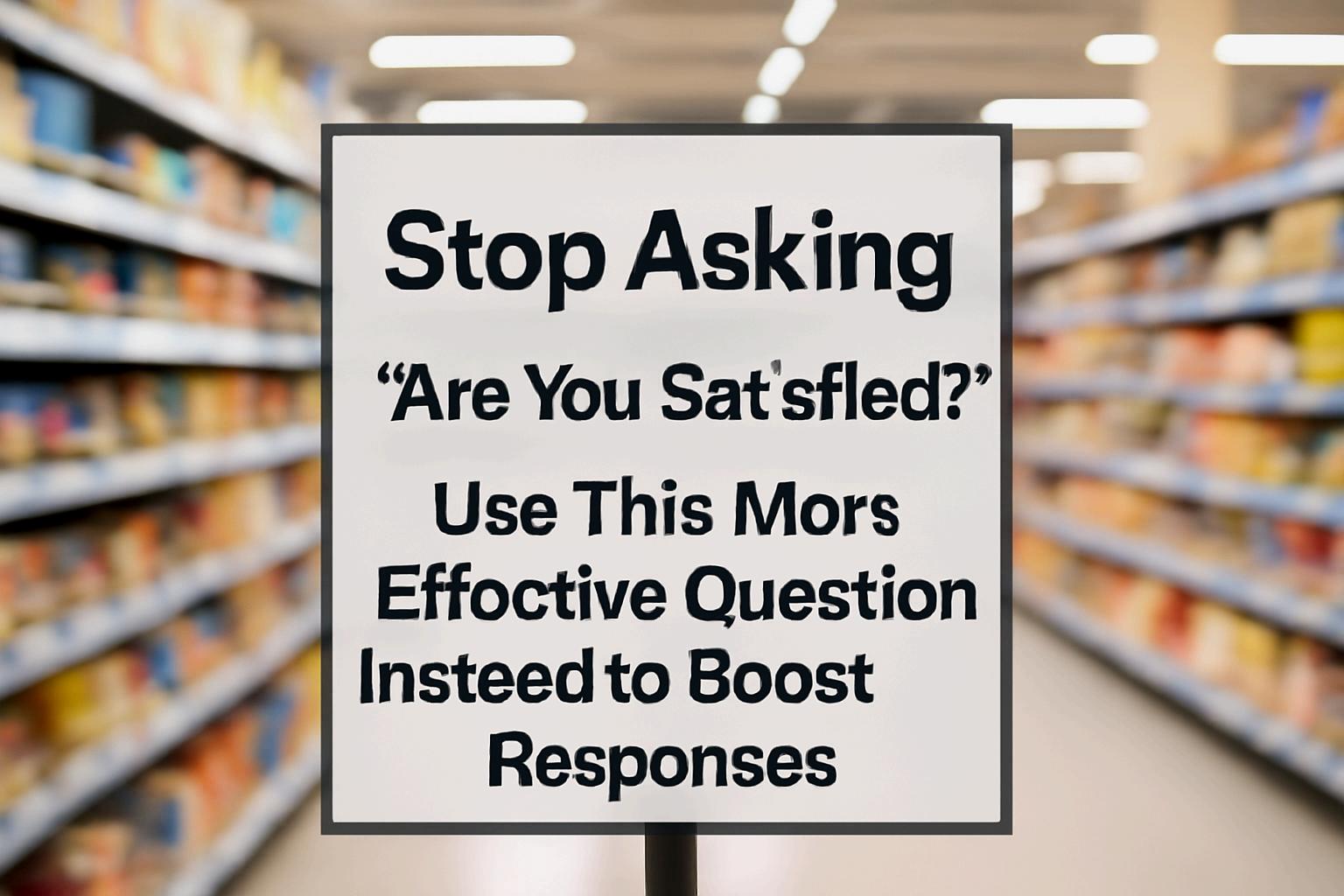Use This More E�ective Question
Instead to Boost Responses
When it comes to gathering feedback, businesses, brands, and individuals often fall into the trap of asking the same old question: “Are you satisfied?” It’s a question that feels safe, familiar, and easy to ask, but what if it’s actually limiting the depth and quality of your responses? What if you’re missing out on opportunities to understand your audience more intimately?

Here’s the truth: asking people if they’re satisfied doesn’t always get to the heart of what they’re thinking It tends to generate vague or overly positive responses, which don’t reveal much about the nuances of their experience. So, what can you do instead?
Let’s dive into how a simple shift in the way you ask for feedback can lead to more meaningful insights and improve the quality of your interactions.
The Problem with “Are You Satisfied?”
If you’ve ever asked this question, you’re not alone. It’s a classic in surveys, customer service forms, and performance reviews. However, here’s the catch: satisfaction doesn’t always equate to loyalty, improvement, or a true understanding of your audience’s needs.
Why is this a problem?
It’s a binary question: Yes or no. Satisfaction can be a fleeting feeling, often dependent on the moment, rather than a true reflection of deeper needs. It doesn’t open the door for elaboration: People might answer with a simple “yes,” without explaining what worked or didn’t work. It masks dissatisfaction: If someone is on the fence or slightly disappointed, they might still answer “yes,” even if their experience wasn’t great.
So, if you want real, actionable insights, it’s time to reframe the question.
The Secret Question: “What Could Be Better?”
Instead of asking, “Are you satisfied?” try this simple but powerful shift: “What could be better?”
Here’s why it works:
Invites constructive feedback: People are naturally drawn to share specific ideas for improvement when they’re asked what could be better. They feel empowered to help you grow, which leads to actionable insights. Gathers more than just satisfaction data: This question opens up the opportunity for suggestions and dissatisfaction to be voiced. It’s not just about whether they liked it or not, but about what needs tweaking, improving, or changing.
Stimulates thoughtful responses: It prompts the respondent to reflect on their experience and provide details that you can act upon. It’s not just a “yes/no” answer but a chance to get into the specifics of their needs and desires.
How to Use “What Could Be Better?” E�ectively
You might be thinking: Sure, that sounds great, but how do I incorporate it in my surveys or conversations? Here’s how:
2. 3.
Follow up with context: Instead of just asking, “What could be better?” you can add a bit of context. For example: “We’re always looking for ways to improve. What could we do to make your experience even better?” This will signal that you’re open to feedback and genuinely want to improve. Give room for elaboration: Whether in a survey or conversation, provide a space for more than just a one-word answer. People will be more inclined to o�er specific insights if you ask for more detailed responses. Ask for examples: If you want even deeper feedback, ask for examples. “Can you tell us about a time when you felt frustrated, and what we could have done di�erently?” This personalizes the experience and helps you identify the pain points.
The Power of Shifting Your Focus
Switching from asking about satisfaction to asking about improvement can drastically change the way you receive feedback. Instead of settling for surfacelevel responses, you’re inviting your audience to become partners in your growth. You’re encouraging transparency, which ultimately helps you build trust and loyalty
It’s also a great tool for continuous improvement, as it focuses on actionable steps that are within your control. Whether you’re collecting feedback from customers, employees, or your audience, “What could be better?” taps into their deeper concerns and desires in a way that “Are you satisfied?” simply cannot.
Taking It a Step Further: Go Beyond the Question
If you want to take this further, consider creating a feedback loop where you show respondents that their suggestions have led to real change. Nothing boosts engagement more than seeing their feedback put to action.
For example, you could send out a follow-up email saying: “Based on your feedback, we’ve made X changes. How does this sound to you?” This approach makes people feel heard and valued, which in turn builds stronger relationships.
Ready to Transform Your Feedback?
The next time you’re preparing a survey or preparing for a conversation with your team, ask yourself: How can I make this feedback more actionable? The
shift from “Are you satisfied?” to “What could be better?” could be the key to unlocking deeper insights and driving meaningful change.
What’s the best feedback you’ve received that led to improvement? Share your experiences in the comments I’ll go first!
